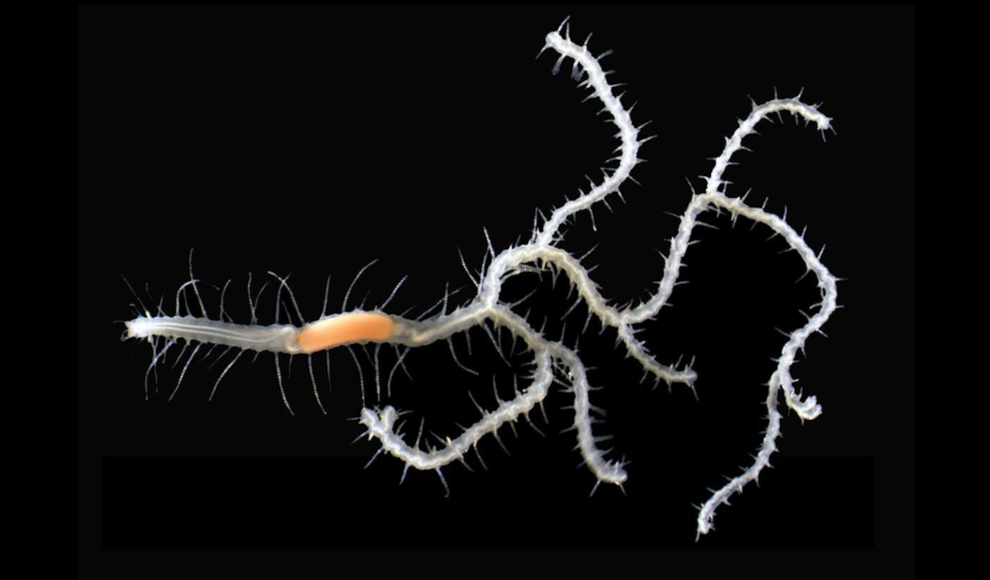In the waters off the coast of Japan, a new species of branched marine worm has been discovered. The worm’s body repeatedly splits at the rear end, making it a unique find in the field of biology. Previously, only two species of branched marine worms had been described. The discovery was made by an international team led by the University of Göttingen, after Japanese researchers sent photos of the worm to Professor Dr. Maite Aguado. The team named the worm Ramisyllis kingghidoahi after King Ghidorah, the archenemy of the film monster Godzilla.
According to their publication in the journal Organisms Diversity & Evolution, the branched worms live in the inner channels of sea sponges. While the 1879-discovered Syllis ramosa McIntosh lives in deep-sea glass sponges, the newly discovered Ramisyllis kingghidorahi and the 2012-discovered Ramisyllis multicaudata inhabit different types of stone sponges in shallow waters. The interdisciplinary team of scientists was able to show that the worms discovered in Australia and Japan have common ancestors, but differ significantly in body shape and genetic makeup. This suggests that the asymmetrical branching body was inherited from a common ancestor that had adapted to life in sponges.
The branching body of the worm could be based on three aspects. Firstly, it allows the worm to grow new rear segments throughout its life, which is a typical characteristic of many worms. Secondly, the branching could allow the worm to regenerate through regrowth or reproduction by shedding segments. Despite being known to science for over a century, branched worms still puzzle Aguado and her team. They are still trying to understand the relationship between the worm and its host sponge, and how the worm manages to sustain its massive body with its tiny mouth.
In conclusion, the discovery of a new species of branched marine worm in Japan has expanded the diversity of these bizarre creatures. The interdisciplinary team of scientists has shed light on the evolutionary relationships between the worms discovered in Australia and Japan, but many questions remain unanswered. The discovery of Ramisyllis kingghidorahi is a reminder that there is still much to learn about the mysteries of the ocean.










